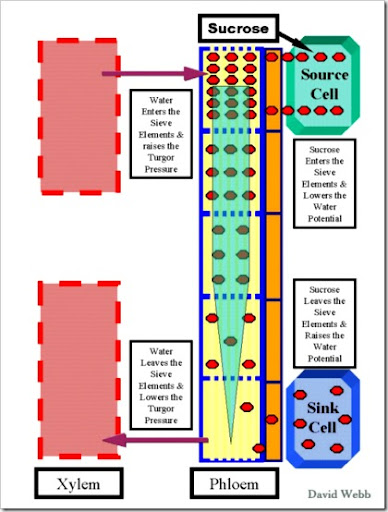Mechanism
- At leaves,the sucrose concentration is high due to photosynthesis, which lower the water potential. Water moves in to phleom by osmosis from neighbouring cell and build up hydrostatic pressure.
- At non-photosynthetic organ, the sucrose concentration is low due to respiration, which higher the water potential. Less water move in to phleom by osmosic from neighbouring cell and the hydrostatic pressure created is lower than those at the leaves.
- A hydrostatic pressure gradient is built up between leaves and non-photosynthetic organ, which lead the liquid with sucrose in phloem is forced to move according to the hydrostatic pressure different, which is from leaves from non-photosynthetic organ.
- Xylem provide a return path for water to refill.


Evidence
- proved concentration different at leaves and non-photosynthatic organ
- phloem sap is under pressure
- When applying hormone to photosynthetic leaves, it only translocates downward. When applying hormone to non-photosynthetic leaves, it will not translocate downward. This indicate that the translocation does not cause by diffusion.
Problem
- Why sieve tubes is living? what is the use of cytoplasmic strand?
- Mass-flow rate is affected by temperature and metabolic inhibitors
- bi-directional flow occur, which does not account
- different molecule have different speed
沒有留言:
張貼留言